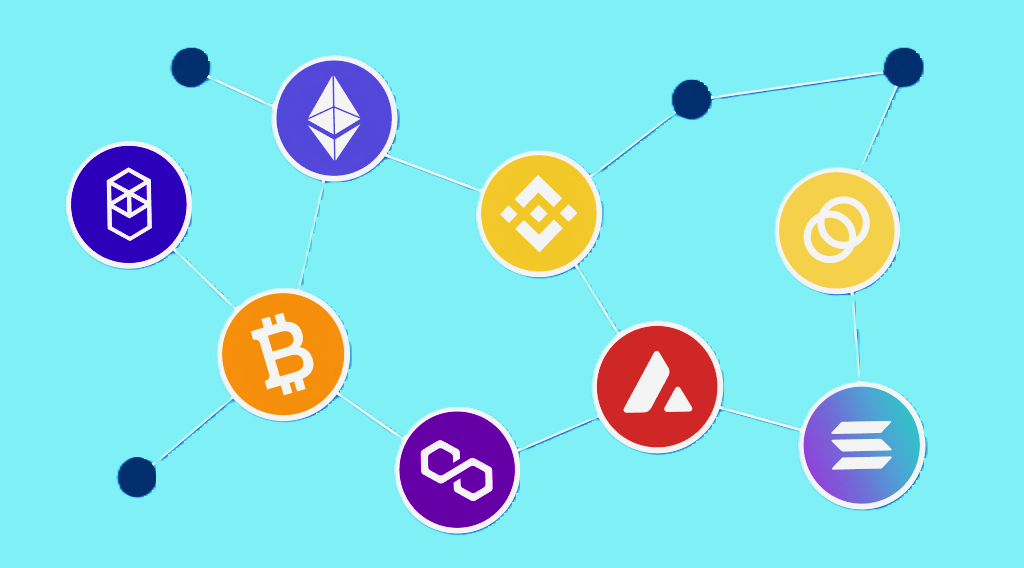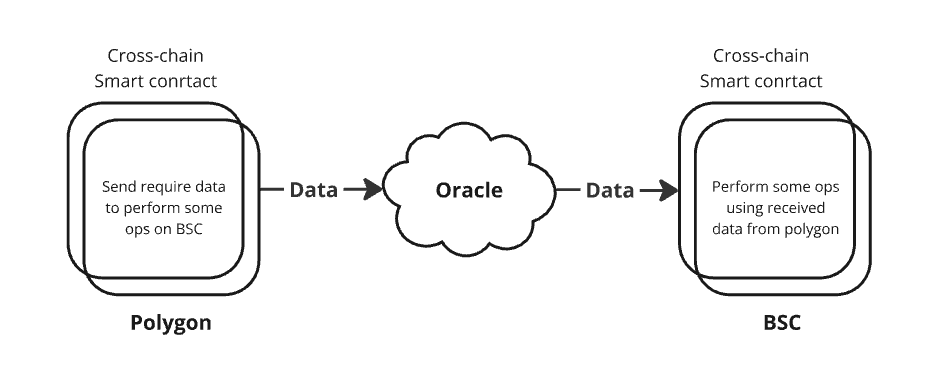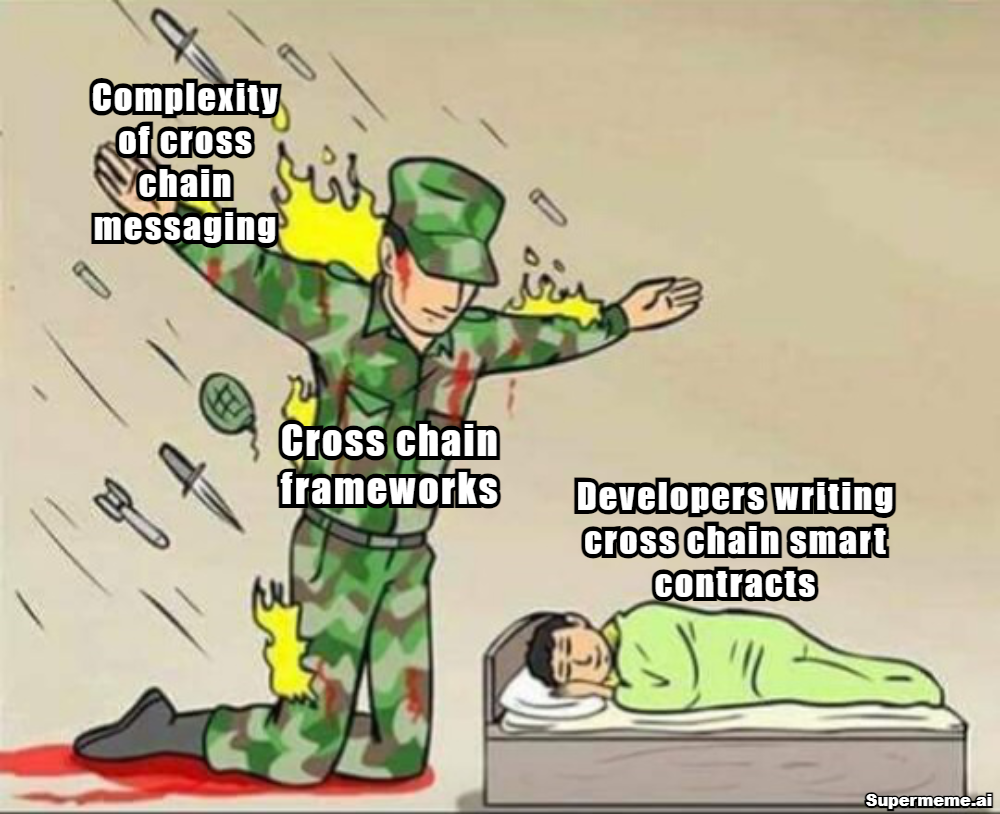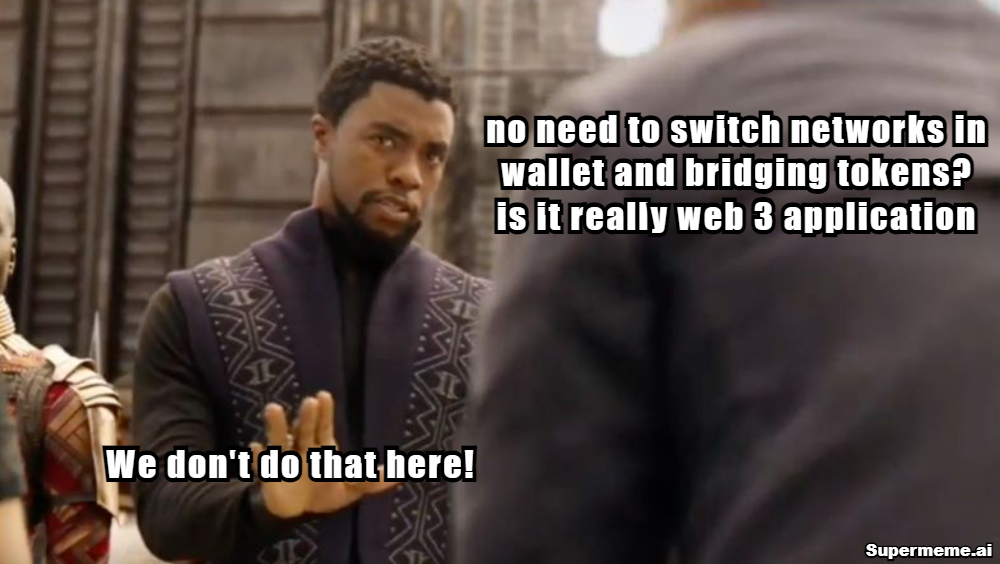Unlocking Interoperability: An Overview of Cross-Chain Smart Contracts
 Rushikesh Jadhav
Rushikesh Jadhav
Smart contracts have seen remarkable adoption recently due to their transparent, autonomous, and immutable nature. They power on-chain computation on blockchains and facilitate on-chain transactions.
However, the Web 3.0 and blockchain space remains fragmented, with different blockchains operating separately, each striving to attract more transactions. This fragmentation creates a need for a connection between these blockchains to enable data sharing, interoperability, and a unified experience similar to Web 2.0.
That’s where cross-chain smart contracts come into play.
Interconnected blockchains
Prerequisite -
Before jumping into cross-chain smart contract development, it’s a good idea to brush up on a few basics. I’d recommend having:
A basic understanding of blockchain and Web 3.0
Basic understanding of smart contracts
that’s it.
Cross-chain smart contracts
Unlike traditional smart contracts, cross-chain smart contracts are not limited to interacting only with contracts on the same blockchain. These innovative contracts have the capability to communicate and interact with smart contracts deployed on entirely different blockchains. For example, a cross-chain smart contract on Ethereum can seamlessly interact with a contract on Binance Smart Chain or any other blockchain, enabling a level of interoperability and collaboration that wasn’t possible before.
Why Do We Need Cross-Chain Contracts?
The current blockchain landscape is highly fragmented, with each blockchain operating independently and striving to attract users and transactions. This fragmentation limits decentralized applications (dApps) by confining them to a single chain, creating silos of liquidity and functionality.
Cross-chain smart contracts address this limitation by enabling dApps to interact seamlessly across multiple blockchains, maintaining a unified state without users needing to switch wallets or networks. For instance, a dApp on Ethereum can execute actions on Binance Smart Chain or Polygon without requiring manual intervention from the user.
This interconnectedness is critical as dApps continue to expand and evolve, offering a more fluid, scalable, and interoperable experience for users and developers alike.
How cross-chain transactions work
Understanding how transactions move from one blockchain to another isn’t as straightforward as it might seem. There are three critical components involved in a cross-chain transaction:
Cross-Chain Smart Contract on Chain A
Oracle Network to Route Transactions Between Chains
Cross-Chain Smart Contract on Chain B

Cross-chain communication overview from Polygon to BSC
Let’s understand it in the following steps
Initiation on Chain A: A transaction intended for Chain B is initiated on Chain A through a cross-chain smart contract.
Transaction Completion on Chain A: Once the transaction on Chain A is completed, indexers monitor and capture this event.
Data Collection by Oracle: The Oracle’s nodes gather the transaction data from Chain A. These nodes operate off-chain, collecting and verifying the data.
Consensus by Oracle Nodes: The Oracle nodes perform a consensus process to ensure the accuracy and correctness of the data gathered from Chain A.
Data Submission to Chain B: After reaching a consensus, the oracle submits the verified data to Chain B.
Initiation on Chain B: Special nodes on Chain B initiate a corresponding transaction based on the data received from Chain A.
Gas Fee Handling: The user pays gas fees upfront on Chain A. These fees are locked in a gas token pool on Chain A, and an equivalent amount is released on Chain B from its gas token pool.
Transaction Execution on Chain B: With the received data and gas tokens, the transaction is executed on Chain B, completing the cross-chain transaction process.

Cross-chain frameworks got you covered
I know, it might seem like a lot to handle! But don’t worry there are several frameworks already developed to make cross-chain smart contract development easier. Some of the major frameworks include:
Wormhole
And there are many more out there. While each framework uses a different underlying mechanism, the process for developers to implement cross-chain smart contracts is quite similar across all of them. We’ll dive into the specifics of implementation in our upcoming articles.
Benefits of Cross-Chain Smart Contracts

No Wallet Network Switching — Enhanced UX
One of the biggest advantages is that users no longer need to switch networks in their wallets when interacting with a DApp on different blockchains. This seamless experience significantly enhances user experience (UX).
Unbounded Decentralized Applications
Cross-chain smart contracts enable DApps to be deployed and interconnected across multiple blockchains. This unbounded approach allows for greater flexibility and scalability, as DApps are no longer restricted to a single blockchain.
State and Liquidity Sharing Across Multiple Blockchains
Cross-chain smart contracts allow for the seamless sharing of state and data between different blockchains, ensuring a unified and consistent experience across networks. This capability is crucial for creating truly interoperable decentralized applications. Additionally, these contracts enable unified liquidity across multiple chains, allowing assets to move freely and efficiently between them. This results in better capital efficiency and broader market access, empowering DApps to function optimally in a multi-chain ecosystem.
Challenges and Limitations of Cross-Chain Smart Contracts
Cost of Cross-Chain Messaging
One of the main challenges is the cost associated with cross-chain messaging. Each time data or a transaction is transferred between chains, there are fees involved, often on multiple blockchains. These costs can add up, making cross-chain operations more expensive compared to on-chain transactions within a single blockchain.
Failure Management and Risk of Fund Loss
Cross-chain transactions involve multiple steps and parties, which increases the risk of something going wrong during the process. If there’s a failure at any point whether it’s a technical issue, network congestion, or a failure in the Oracle service there’s a potential risk of funds being lost or stuck in transit. Managing these risks requires robust failure management strategies and careful design.
Reliance on External Services like Oracles
Cross-chain smart contracts often depend on external services like oracles to relay data between blockchains. While oracles are critical for enabling cross-chain functionality, they also introduce an external point of dependency. If the Oracle service fails or is compromised, it could impact the entire cross-chain transaction process, leading to delays or even losses.
Security Concerns
Security is a significant challenge in cross-chain operations. Each additional layer whether it’s an oracle, a bridge, or another blockchain — introduces new potential vulnerabilities. Ensuring that the entire cross-chain system is secure requires comprehensive auditing and testing of all components involved. Any weak link in the chain could be exploited, leading to potential breaches or theft of assets.
Conclusion
Cross-chain smart contracts are revolutionizing the blockchain ecosystem by enabling seamless interactions across multiple blockchains. They allow for unbounded decentralized applications, unified liquidity, and a smoother user experience without the need for network switching.
However, these advantages come with challenges, including the cost of cross-chain messaging, reliance on external oracles, and heightened security concerns. Learning cross-chain messaging will be crucial as we move towards a more interconnected future.
Subscribe to my newsletter
Read articles from Rushikesh Jadhav directly inside your inbox. Subscribe to the newsletter, and don't miss out.
Written by

Rushikesh Jadhav
Rushikesh Jadhav
Innovative Smart Contract & Backend Developer building cross-chain interoperable smart contracts and Dapps. With over a year of hands-on experience in smart contract and backend development, I’m passionate about transforming blockchain technology into powerful, user-friendly solutions. My expertise lies in developing cross-chain decentralized applications that streamline interactions and enhance user experiences. From designing upgradeable smart contracts to optimizing token strategies and developing dynamic algorithms, I thrive on solving complex challenges and delivering impactful results. My work has led to significant improvements in user returns and project rankings, reflecting my commitment to innovation and excellence. I’m all about making blockchain technology more accessible and effective. Let’s connect and see how we can push the boundaries of blockchain together! 🚀